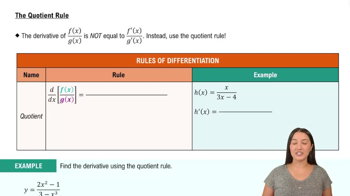Finding derivatives from a table Find the values of the following derivatives using the table. <IMAGE>
d. d/dx (f(x)³) |x=5
 Verified step by step guidance
Verified step by step guidance Verified video answer for a similar problem:
Verified video answer for a similar problem:



 5:02m
5:02mMaster Intro to the Chain Rule with a bite sized video explanation from Patrick
Start learning